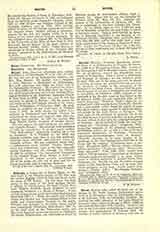

Bucelin (BUZLIN), GABRIEL, Benedictine historical writer, b. at Diessenhofen in Thurgau, December 29, 1599; d. at Weingarten, June 9, 1681. A scion of the distinguished line of Bucellini counts, Gabriel, at the age of thirteen, entered the Benedictine monastery at Weingarten. After a course in philosophy and theology at Dillingen he was ordained priest April 23, 1624, and in the same year sent, as master of novices, to restore the primitive fervor and raise the standard of studies in the monastery of St. Trudpert in the Black Forest. Having filled the position of master of novices at Weingarten and professor of humanities at Feldkirch (1635), whence on the approach of the Swedish army he was forced to flee to Admont (1646), he was appointed prior of St. John’s monastery, Feldkirch (1651), where he remained until a few months before his death. Bucelin was a very prolific writer, being the author of some fifty-three works, a large number of which are still in manuscript in the royal library at Stuttgart. His chief claim to the gratitude of posterity lies in the fact that he was, if not the very first, at least among the first authors to deal with the ecclesiastical history of Germany. Of his published works the most important are: “Germania sacra” (Augsburg, 1655), containing accounts of the principal ecclesiastics, archbishops, abbots, etc., as well as a list of the most important monasteries of Germany; “Germanise topo-chrono-stemmatographia sacra et profana” (1655-78), treating, as its name implies, of the genealogy of the most distinguished members of the clergy and the nobility; “Constantia sacra et profana” (Frankfort, 1667); “Rhaetia etrusca, romana, gallica, germanica” (Augsburg, 1661); “Nucleus historiae universalis” (Ulm, 1650, 1654; carried from 1650 to 1735 by Schmier, “Apparatum ad theologiam scholastico-polemico-practicam”), of great importance to scholars interested in ancient charts, bulls, diplomata, etc. Bucelin was also the author of many works on the Benedictine Order and its most illustrious members, among them “Aquila imperii benedictina” (Venice, 1651); “Menologium benedictinum” (Feldkirch, 1655).
F. M. RUDGE

